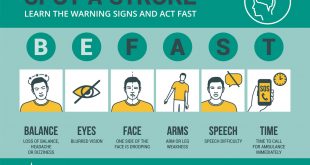By Dr. Drew Hall
Neuralgia, a condition characterized by intense, stabbing pain along the nerves, can disrupt daily life and cause significant discomfort. Among the various types of neuralgia, two common forms are occipital neuralgia and trigeminal neuralgia. These conditions affect different nerves in the head and face, leading to distinctive symptoms and treatment approaches. Understanding the causes, symptoms, and treatment options for occipital and trigeminal neuralgia is crucial for individuals experiencing these conditions.
Occipital Neuralgia
Occipital neuralgia is a neurological condition that causes intense, sharp, or shooting pain in the back of the head, neck, and behind the eyes. This pain stems from irritation or injury to the occipital nerves, which run from the top of the spinal cord to the base of the skull. The exact cause of occipital neuralgia can vary, but common triggers include:
1. Compression or Irritation: Compression of the occipital nerves due to tight muscles, injury, or inflammation can lead to neuralgia.
2. Trauma: Head trauma, such as whiplash injuries from car accidents or falls, can damage the occipital nerves and trigger neuralgia.
3. Medical Conditions: Conditions such as arthritis, diabetes, or infections may contribute to the development of occipital neuralgia.
Symptoms of Occipital Neuralgia
Individuals with occipital neuralgia often experience the following symptoms:
• Intense, shooting pain that radiates from the base of the skull to the back of the head or behind the eyes.
• Sensitivity to light or sound.
• Tenderness in the scalp or neck.
• Pain triggered by neck movements or pressure on the back of the head.
Treatment Options for Occipital Neuralgia
Treatment for occipital neuralgia aims to relieve pain and manage symptoms effectively. Common treatment options include:
1. Medications: Over-the-counter pain relievers, muscle relaxants, or prescription medications such as anticonvulsants or tricyclic antidepressants can help alleviate pain.
2. Nerve Blocks: Injection of a local anesthetic or steroid medication around the occipital nerves can provide temporary pain relief.
3. Physical Therapy: Techniques such as massage, stretching exercises, and postural correction can help reduce muscle tension and improve neck mobility.
4. Nerve Stimulation: In cases of severe or refractory occipital neuralgia, nerve stimulation therapies such as occipital nerve stimulation may be considered to modulate pain signals.
Trigeminal Neuralgia
Trigeminal neuralgia is a chronic pain condition that affects the trigeminal nerve, which is responsible for sensation in the face. The hallmark symptom of trigeminal neuralgia is sudden, severe, electric shock-like pain that radiates along one or more branches of the trigeminal nerve. The exact cause of trigeminal neuralgia is often unknown, but potential factors include:
1. Compression: Compression of the trigeminal nerve by blood vessels, tumors, or abnormal brain structures can lead to neuralgia.
2. Degeneration: Age-related changes or damage to the myelin sheath, a protective covering of nerve fibers, may contribute to the development of trigeminal neuralgia.
Symptoms of Trigeminal Neuralgia
Trigeminal neuralgia is characterized by the following symptoms:
• Sudden, intense facial pain, typically on one side of the face.
• Pain triggered by activities such as chewing, talking, or touching the face.
• Episodes of pain lasting from a few seconds to several minutes.
• Periods of remission followed by recurrent pain attacks.
Treatment Options for Trigeminal Neuralgia
Managing trigeminal neuralgia involves a combination of medications, procedures, and lifestyle modifications to alleviate pain and improve quality of life. Common treatment approaches include:
1. Medications: Anticonvulsant medications such as carbamazepine or gabapentin are often prescribed to reduce nerve sensitivity and pain intensity.
2. Surgical Interventions: Procedures such as microvascular decompression, gamma knife radiosurgery, or nerve rhizotomy may be recommended to relieve pressure on the trigeminal nerve and disrupt pain signals.
3. Alternative Therapies: Techniques such as acupuncture, biofeedback, or relaxation exercises may help manage pain and reduce stress levels.
In conclusion, occipital and trigeminal neuralgia are neurological conditions characterized by intense, debilitating pain in the head and face. Understanding the causes, symptoms, and treatment options for these conditions is essential for effective management and improved quality of life for individuals experiencing neuralgia. With proper diagnosis and a multidisciplinary treatment approach, individuals with occipital and trigeminal neuralgia can find relief from pain and regain control over their daily activities.
Schedule a no obligation FREE consultation in our office today!
Sarasota Upper Cervical Chirporactic
941.259.1891
sarasotauppercervical.com
 Southwest Florida's Health and Wellness Magazine Health and Wellness Articles
Southwest Florida's Health and Wellness Magazine Health and Wellness Articles

